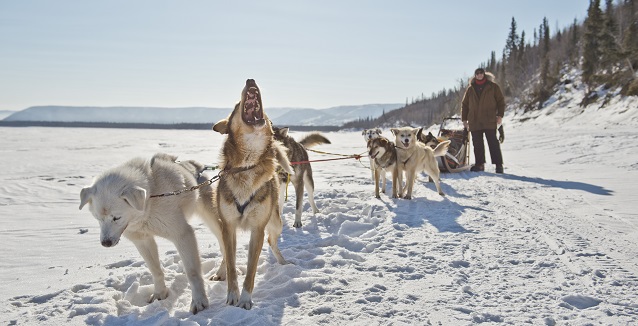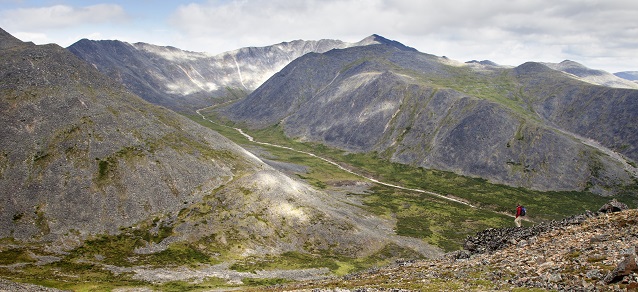
NPS Photo, by Greg Kinman
Just shy of the Arctic Circle lies a land literally frozen in time – Yukon-Charley Rivers National Preserve. Its history and culture live on through those who have come, gone, and still remain. Come retrace the routes of ancient nomadic hunters, dog-team mail carriers, and supply-laden steamboats through one of the great North American geologic faults that bore the 1890s gold rush. Solitude awaits. Only a handful of hearty souls still call this 160-mile stretch of the Yukon River their year-round home, making it wilder than it was one hundred years ago.
The frontier wilderness of the preserve includes the quintessential display of living history. Its colorful past dating back to the beginning of life remains to be continually interpreted. Billion-year-old rocks reveal the diverse story of life in east-central Alaska and contain some of the oldest microfossils in existence. Towering bluffs above the Yukon River illustrate 700,000 years of unbroken geological history. Dotting them are the cliff-side eyries of one of North America’s largest breeding populations of peregrine falcons. Atop the bluffs, the Fortymile caribou herd and Dall’s sheep graze on the arctic steppe vegetation remaining from the last ice age. Moose roam the permafrost lowlands, while bears,wolves, lynx, and wolverine exist in their natural state throughout the preserve.

NPS Photo, By Ranger Josh Spice
Some of North America’s oldest inhabitants, the Han Gwich’in Athapascans, still call this rich land home. Surviving and thriving here requires a traditional subsistence lifestyle - centuries-old sites of seasonal fish camps are still used to harvest salmon along their 1200-mile upstream journey from the ocean to the headwaters of the Yukon and its tributaries. Scattered about the preserve are relics of the more recent past: trapper and miner cabins preserved for public use, a more than eighty-year-old roadhouse offering year-round shelter for large groups, an intact gold dredge floating in the pond where it last operated, and all the intangible drama that influenced Jack London and Robert Service—the “Spell of the Yukon” ruggedness.

Hiking in the mountains of the Charley River headwaters
If your desires are grander than the wide Yukon River valley, venture to the preserve’s highlands where exposed granite peaks boldly project beyond the reach of vegetation. Follow the water downslope through the only entirely protected major river watershed in National Park Service lands, belonging to the 106 mile-long Wild and Scenic Charley River. As you raft the tumultuous thirty-one feet-per-mile drop of the Charley through 1.1 million acres of virtually unaltered landscape, retrace the steps of Leon Crane’s 84 winter days in one of the greatest survival stories ever told.
Your experience will never seem long enough, but don’t fret. This land will always be here, as it always has been, telling these stories and more. It patiently awaits its next visitor, to give and take one story for another, just like the relationship between the survival of the land and its people. Come sign your name in the logbook at Slaven’s Roadhouse or one of the other historic cabins and be a part of the history of Yukon-Charley Rivers National Preserve.
Last updated: August 20, 2020
